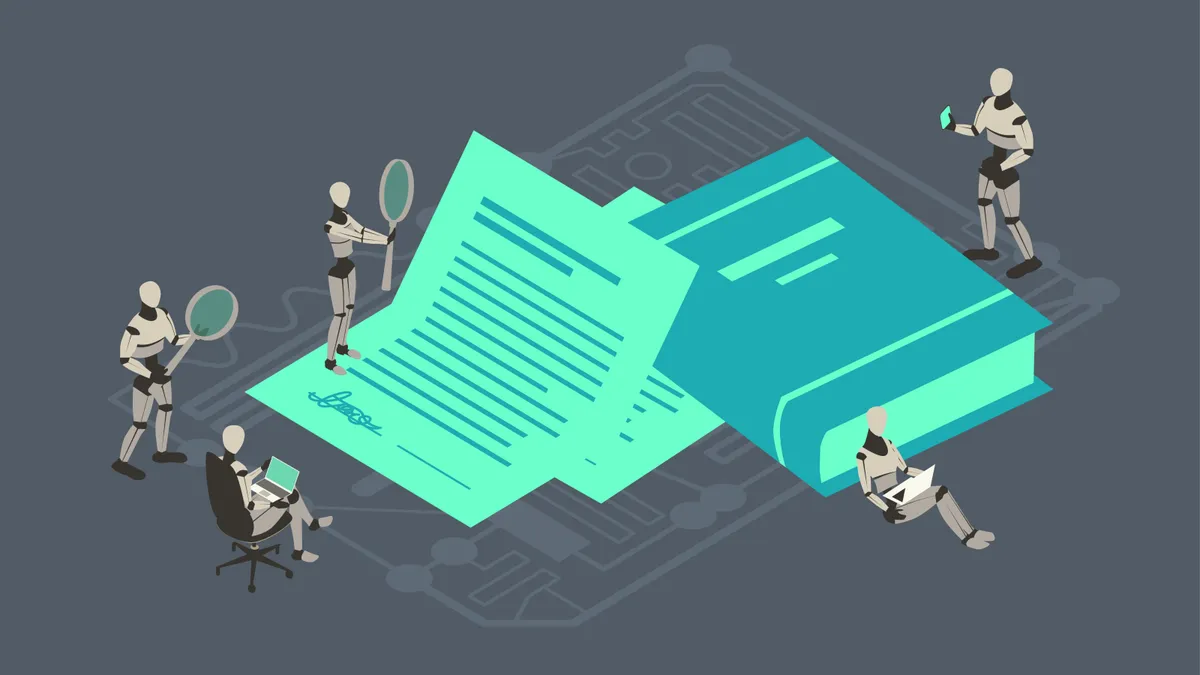Jared Hostmeyer is senior director of product management at Wolters Kluwer ELM Solutions.
Like most industries, the corporate legal field has been upended by the COVID-19 pandemic and its many side effects. The Great Resignation led many attorneys to seek new opportunities, leaving corporate legal departments (CLDs) short-staffed. Remote and hybrid work models have made communication and information retrieval more challenging, and rising inflation has spurred demands for increased efficiency and driven more insourcing.
The need for efficiency is what caused 96% of respondents to the CLOC 2021 State of the Industry survey to indicate a high or medium priority placed on the automation of legal services—including matter management. That was before new macroeconomic trends that will likely push that percentage up even higher.
Let’s take a closer look at three of those trends—and how they are making the strongest case yet for corporate legal departments to digitize and automate their matter management processes.
1. Inflation
Insourcing tends to happen cyclically; there are ebbs and flows. But right now, the trend towards using legal staff from within the corporate environment is stronger than ever. In fact, according to the Association of Corporate Counsel’s 2022 Law Department Management Benchmarking Report, insourcing makes up the majority of legal spend.

At least some of this is likely thanks to historically high inflation levels. Higher prices have forced many CLDs to pull back on outside counsel, instead leveraging already-stretched staff for legal matters.
This creates a different dynamic for matter management. Now, it’s even more critical for CLDs need to be able to manage the work they’re producing, not just account for the work of outside counsel. They need complete visibility into matter lifecycles, allowing them to track documents, narratives, and the time spent on matters. And they need to be able to archive and retrieve past artifacts—something they’re not used to having to do quickly and easily.
While CLDs are bringing more work in house, they’re still dealing with the after-effects of the Great Resignation, which created massive turnover in the legal ranks. This makes assigning matters appropriately to avoid burnout and ensure high quality work more important than ever before.
2. Remote work
The COVID-19 pandemic has also driven an unprecedented rise in remote and hybrid work. A recent Gallup poll showed that nearly half of all American employees work remotely at least some of the time.
Benefits accompany remote work, but difficulties do, too. For instance, remote or hybrid work environments can make it exceptionally challenging for corporate attorneys to keep track of matters. Simply finding out if a matter is inactive because it’s closed or because a trial date was set many months ahead can be a challenge, as legal staff can’t always pop over to a colleague’s desk to check the status of something. People are not as physically close and cannot engage in fluid in-person communication, which makes it difficult to attain a true picture of a matter’s status.
As more matter management happens through systems or email, CLDs need a way to see all relevant details in one place: what’s coming in, who is assigned to the matter, and what the status is—without the need for in-person meetings or discussions. As remote work becomes the new normal, legal operations professionals must be prepared to gather, track, and report on all internal and external details on the matter at hand.
3. Asynchronous tools and portals
Remote work has spurred a cottage industry of tools that companies have implemented to support distributed environments. As a result, context switching between one application to another has become the norm for corporate attorneys, who are quickly becoming overrun with tools and portals.
One problematic workflow relates to the intake of Legal Service Requests (LSRs) from “internal” clients. LSRs must be addressed and placed into a matter intake system. But the proliferation of tools creates an onslaught of data sources and can force attorneys to bookmark separate portals and keep track of myriad requests coming in through multiple applications. This is a mundane but time-consuming task that takes them away from the legal work they’re now doing because of points one and two.
Digitizing matters reduces headwinds
While these trends are creating headwinds for CLDs, they are also making now the ideal time for corporate attorneys to invest in digitizing and automating their matter management processes. Doing so can significantly improve the entire matter management lifecycle. It allows teams to gain greater visibility into matters as they progress through the four main stages—intake, opening of new matters, delivery of work, and matter completion.
No longer must teams hunt for the status of matters across a remote or hybrid environment. Digitized matters are easily discovered and retrieved by anyone at any time, fostering better collaboration and helping attorneys ascertain status with a few keystrokes. And teams can gain a better understanding of who’s working on what, which helps in the allocation of staff resources.
CLDs also have the option to collect data from different applications, serving as a centralized intake, storage, and management function. Attorneys won’t have to worry about manually keeping track of LSRs that come from different sources and can instead focus their attentions on more value-added tasks.
So, for CLDs who may have once been on the fence about digitizing and automating matter management—now’s the time to make the move. In a world in constant flux, it will help them stabilize the way they handle legal matters.


















